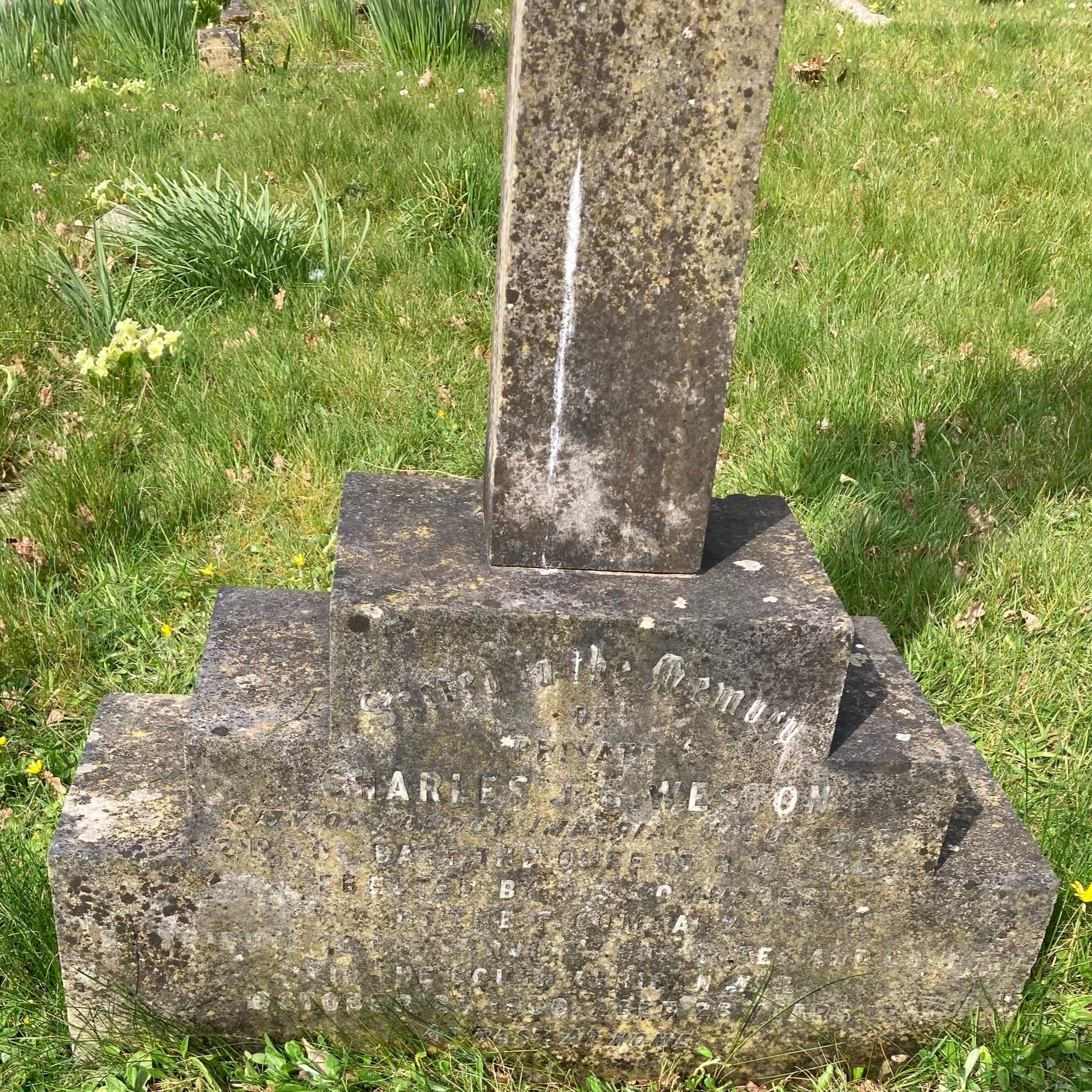Busbridge & Hambleton Church
Godalming, Surrey
Charles Weston (1874-1900)
Charles John Green Weston was born in Godalming on 12th Aug 1874, to Charles Frederick Weston, an Ironmonger, and his wife. For a time, he was a member of ‘F’ Company of the Second Volunteer Battalion of the Queen’s Royal West Surrey Regiment. With the outbreak of the Second Boer War in October 1899, he joined The City of London Imperial Volunteers (CIV), which were created on 24th December that year, with the first volunteers being registered on 1st January 1900. Charles, like the rest of the officers and men of the CIV, received the freedom of the City of London before his departure to South Africa. Charles saw service in South Africa, as part of the force that relieved Kimberley on 15th February 1900 and at the actions at Jacobsdal on the 16th. However, he evidently contracted Enteric Fever just as his time in South Africa was coming to an end. Leaving Cape Town on the Aurania, he appeared to be well but his symptoms materialised three days into the voyage. His parents were told of the situation via telegram and met the Aurania upon its arrival at Southampton, where they were reunited with their gravely ill son aboard the vessel. His mother, as well as a nurse and several of the officers’ wives, stayed with him that night, but he passed away in the early hours of the morning. A large crowd attended his funeral in Godalming, with all the shops having put black shutters on their windows. Members of the CIV were also in attendance and a letter of condolence was received from the Lord Mayor of London.
Restored by Steve Davies, with research by Paul Cox
Before
After
Richard Jones (1866-1884) & Hubert Jones (1878-1900)
Two brothers are commemorated on this stone. Richard, the elder, was born to Edward Jones, a skinner and labourer, and his wife Jane. By the age of 15, Richard was working as a general labourer and then joined the Army on 12th March 1883 at the age of 19. Although he signed up for twelve years’ service, this was cut short after just 285 days. He was discharged in Cork, Ireland in November 1883, being noted as of ‘Very good’ character, but being ‘Medically unfit for Further Service’. There is no indication as what might have ailed him, but he died six months later, having returned home. He was buried on 26th April 1884.
His younger brother, Hubert Godwin Jones, was born in 1878. By 1891, living with his mother and two other brothers, Hubert was working as an errand boy. There is no surviving record of him joining the Army or the 6th Dragoons but he was killed in action at Rensburg, Colesberg on 4th January 1900 during the Second Boer War and is also commemorated on the memorial at the Colesberg British Military Cemetery.
Before
After




